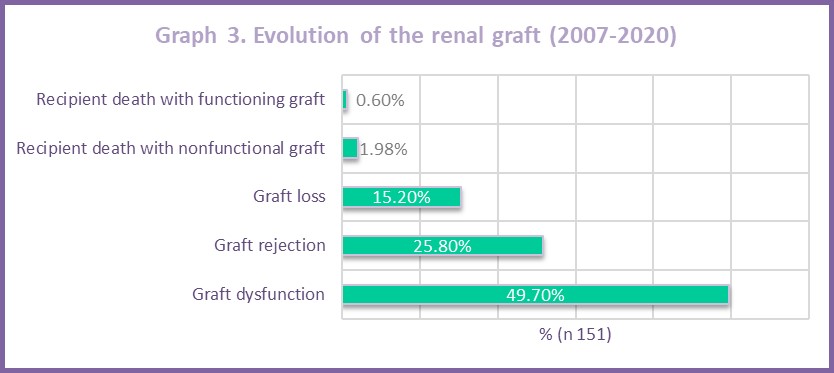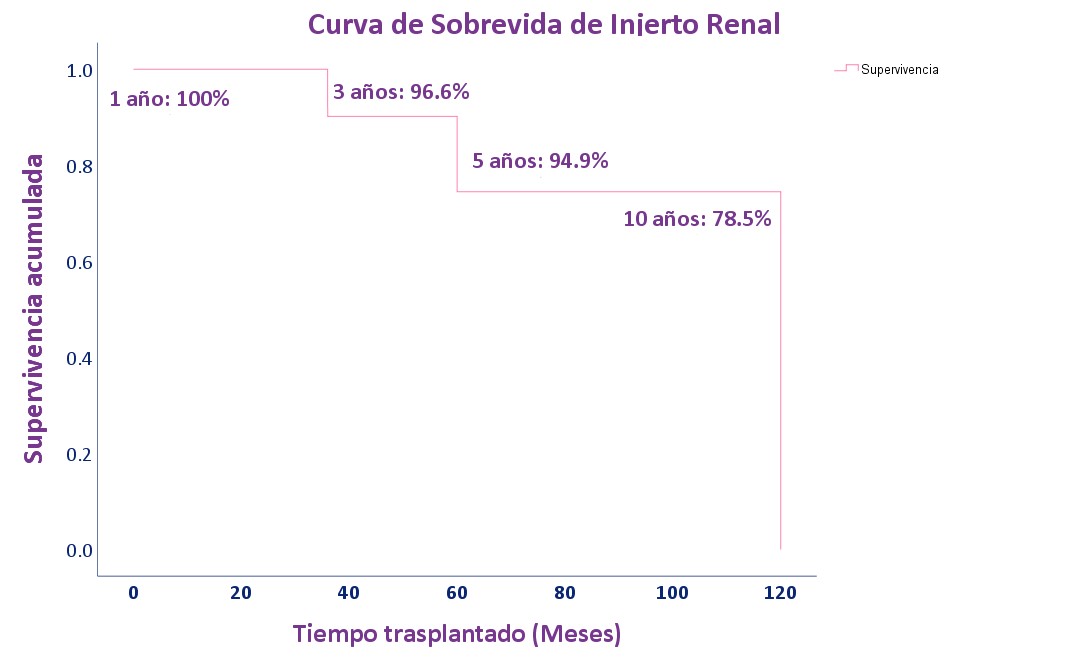
Kidney graft survival in pediatric patients at the UMEA Pediatric Hospital of CMNO
Gabriela Pedroza Orozco1, Soledad Zárate Ramírez1, Juan Carlos Barrera de León2.
1Trasplant Urology and Nephrology Department, UMAE Hospital de Pediatría CMNO IMSS, Guadalajara, , Mexico; 2Directorate of Education and Research and Training, UMAE Hospital de Pediatría CMNO IMSS, Guadalajara, , Mexico
Introduction: Kidney transplantation is the gold standard for renal replacement therapy in pediatric patients with end-stage renal disease. Jalisco is the state in first place at the national level for kidney transplants, and in pediatrics it’s the UMAE Pediatric Hospital of CMNO. Renal graft and recipient survival and patient quality of life are better after kidney transplantation.
Methods: Analytical cross-sectional study with the objective of determining the survival of the renal graft in pediatric patients of the headquarters; data were collected from pediatric kidney transplant recipients performed from 2007 to 2020 at our hospital (n=715), who met the study criteria: current age under 18 years, current social security, and continued follow-up with us (n=151). A mixed model analysis was used to indicate the possible factors on the survival time of the renal graft.
Results: The average age of the recipient was 10.6 years (58.3% being male) and the donor 30.5 years (49.7% males predominated), both groups it´s more frequent O positive blood. The source of donation of the grafts (n=151) were living donors (78.1%) and cadaveric donors (21.9%). In total, 40 patients had underlying urological disease (vesicoureteral reflux most frequent), cataloging it as the main cause, however, it was striking that the undetermined had the highest percentage 38.5%, followed by hereditary 15.2%, glomerulopathies 8.6%, cystic diseases 6.6%, systemic 2.6% and HUS 1.3%. During the 13 years, 15.2% had loss, the first cause being poor adherence to treatment. The overall survival of the recipient was 97.3% and of the renal graft 84.7%.


Conclusions: The survival of the recipient and the kidney graft at our site are excellent, both comparable to those reported in developed countries. We show that the survival of living donation sources is higher than cadaveric, which is within what is expected according to international bibliography. The determined etiologies of CKD in our children were: Uropathies, hereditary, glomerulopathies, cystic, systemic and HUS. Intervening on pediatric risk factors is one of the actions implemented in our hospital to optimize the pediatric kidney transplant program.

Key words: Graft survival, kidney transplant, pediatric, factors, donor, recipient.

right-click to download
